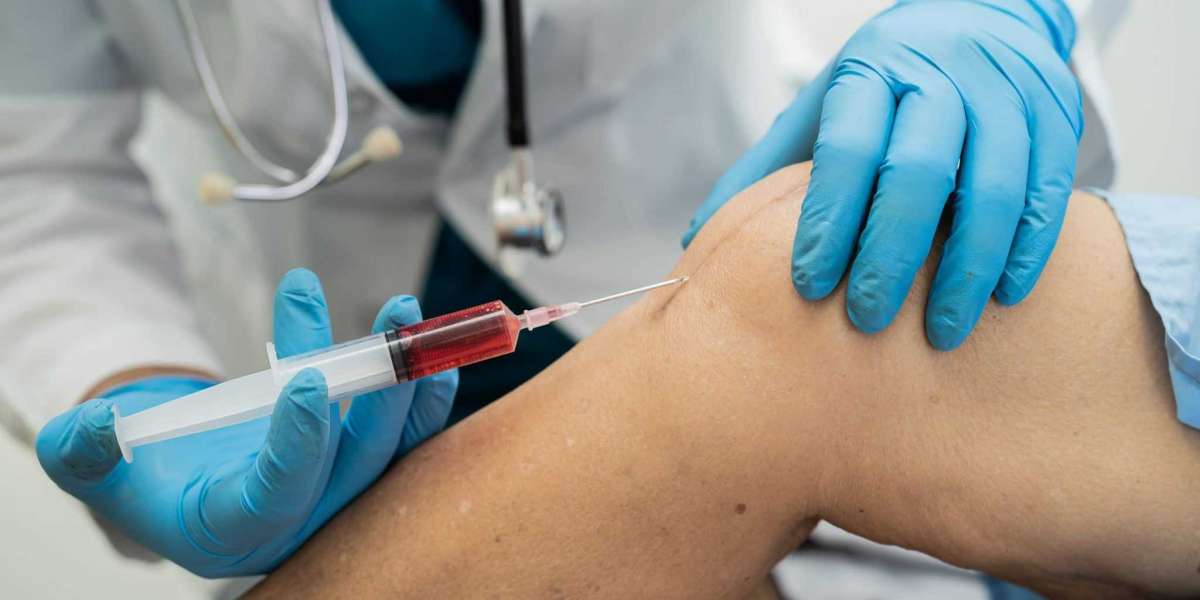Knee pain is one of the most common complaints among adults, affecting millions of people worldwide. It can result from various causes — including arthritis, injury, overuse, or the natural aging process. When pain, stiffness, or inflammation limits daily activities, treatments like knee injections can offer targeted relief and improve mobility without the need for surgery.
The knee joint bears much of the body’s weight, making it prone to wear and tear over time. As cartilage deteriorates or inflammation sets in, even simple tasks like walking or climbing stairs can become challenging. Fortunately, advances in medical science have introduced several effective injection-based treatments designed to alleviate discomfort and restore function.
What Are Knee Injections?
Knee injections are minimally invasive procedures in which a healthcare professional injects medication directly into the knee joint. These treatments are designed to relieve pain, reduce inflammation, and, in some cases, help repair damaged tissues. Because the medication is delivered straight to the affected area, the effects are more targeted and often faster than oral painkillers or topical treatments.
Different types of knee injections are available, each serving a unique purpose. The most commonly used include corticosteroid injections, hyaluronic acid injections, and platelet-rich plasma (PRP) therapy. Some patients may even benefit from newer biologic treatments designed to promote healing at the cellular level.
Types of Knee Injections and How They Work
Corticosteroid Injections
Corticosteroid injections are among the most widely used options for relieving knee pain. They contain powerful anti-inflammatory medications that reduce swelling and irritation inside the joint. Relief often begins within a few days and can last from several weeks to a few months.
These injections are particularly effective for conditions like osteoarthritis, rheumatoid arthritis, and bursitis. However, repeated steroid use over time can weaken cartilage and soft tissue, so doctors typically limit the number of treatments per year.
Hyaluronic Acid Injections
Also known as “viscosupplementation,” hyaluronic acid injections are designed to improve joint lubrication. Hyaluronic acid is a naturally occurring substance in joint fluid that keeps the knee moving smoothly. In people with arthritis, this fluid becomes thinner and less effective.
By injecting hyaluronic acid directly into the knee, doctors can help restore cushioning and ease friction between bones. Although results vary, many patients report improved mobility and reduced pain lasting up to six months. These knee injections are especially beneficial for those who want to delay or avoid knee replacement surgery.
Platelet-Rich Plasma (PRP) Injections
PRP therapy is an advanced regenerative treatment that uses the patient’s own blood. A small blood sample is taken and spun in a centrifuge to separate platelet-rich plasma — the component that contains growth factors responsible for healing.
When injected into the knee, PRP stimulates tissue repair and reduces inflammation naturally. It has gained popularity among athletes and individuals with chronic knee pain who prefer non-surgical alternatives. Studies show promising results, with many patients experiencing long-term improvement in both pain and function.
Stem Cell Therapy
Stem cell injections represent the future of regenerative medicine. In this treatment, stem cells — often derived from bone marrow or fat tissue — are injected into the affected joint to encourage cartilage repair and regeneration. While research is ongoing, early studies suggest significant pain reduction and improved joint function for patients with osteoarthritis or cartilage damage.
Although still considered experimental in some regions, stem cell-based knee injections are rapidly gaining recognition as a potential alternative to surgery for severe joint degeneration.
When Are Knee Injections Recommended?
Doctors typically recommend knee injections when conservative treatments such as rest, physical therapy, and oral medications fail to provide sufficient relief. They are suitable for individuals with conditions like:
- Osteoarthritis (most common cause of chronic knee pain)
- Rheumatoid arthritis
- Tendonitis or bursitis
- Meniscus tears
- Ligament injuries
Patients who are not ideal candidates for surgery — due to age, health conditions, or personal preference — often find injections to be an effective middle ground between medication and invasive procedures.
What to Expect During the Procedure
The process of receiving knee injections is quick, straightforward, and typically performed in a clinic. The doctor cleans the area, applies a local anesthetic, and may use ultrasound guidance to ensure precision. The injection itself takes only a few minutes, and most patients experience minimal discomfort.
After the procedure, mild soreness or swelling may occur, but this usually subsides within a day or two. It’s advised to rest the joint for at least 24 hours, avoiding heavy exercise or prolonged standing. Some patients notice immediate relief, while others feel gradual improvement over the following days.
Benefits of Knee Injections
The primary benefit of knee injections is targeted pain relief. Unlike oral medications, which must pass through the digestive system, injections deliver medicine directly to the site of inflammation. This focused approach provides faster and more effective symptom management.
Other key benefits include:
- Reduced inflammation and swelling
- Improved joint mobility and flexibility
- Delay or avoidance of surgery
- Minimal downtime compared to surgical procedures
- Enhanced quality of life for chronic pain sufferers
Furthermore, treatments like PRP and stem cell injections can potentially repair damaged tissue, addressing the root cause rather than just the symptoms.
Possible Risks and Side Effects
While knee injections are generally safe, minor side effects can occur. These may include temporary redness, bruising, or mild pain at the injection site. Rarely, infections, allergic reactions, or bleeding may develop.
Repeated steroid injections over time may contribute to cartilage breakdown or weaken nearby tendons, which is why medical supervision is crucial. Patients should always discuss any pre-existing medical conditions or allergies with their doctor before undergoing the procedure.
Recovery and Aftercare
Post-injection care plays a significant role in maximizing the benefits of knee injections. Patients are encouraged to rest and avoid strenuous activity for at least 24–48 hours. Applying ice can help reduce any mild swelling or discomfort.
Doctors may recommend follow-up appointments to assess improvement and determine if additional treatments are needed. In many cases, combining injections with physiotherapy, weight management, and low-impact exercises (like swimming or cycling) enhances long-term results.
Alternative and Complementary Treatments
While knee injections provide significant relief, combining them with other therapies can further improve outcomes. Alternative treatments include:
- Physical therapy: Strengthens muscles surrounding the knee, improving support and stability.
- Acupuncture: Helps reduce pain perception and inflammation.
- Nutritional supplements: Glucosamine, chondroitin, and omega-3 fatty acids may promote joint health.
- Weight management: Reducing excess body weight can significantly lessen joint stress.
These holistic approaches, when used alongside medical treatments, can help patients regain mobility and prevent future pain episodes.
When to See a Doctor
If knee pain persists despite rest, ice, and over-the-counter medications, it’s time to consult a specialist. Early intervention prevents chronic issues and may help avoid the need for surgery. Patients experiencing sudden swelling, redness, or severe pain should seek immediate medical attention.
Conclusion
Knee pain can significantly impact your quality of life, but you don’t have to live with it. Knee injections offer a safe, effective, and minimally invasive solution for managing inflammation, pain, and stiffness. Whether it’s corticosteroid, hyaluronic acid, or regenerative therapies like PRP and stem cells, these treatments provide a path to long-lasting relief and improved mobility.













